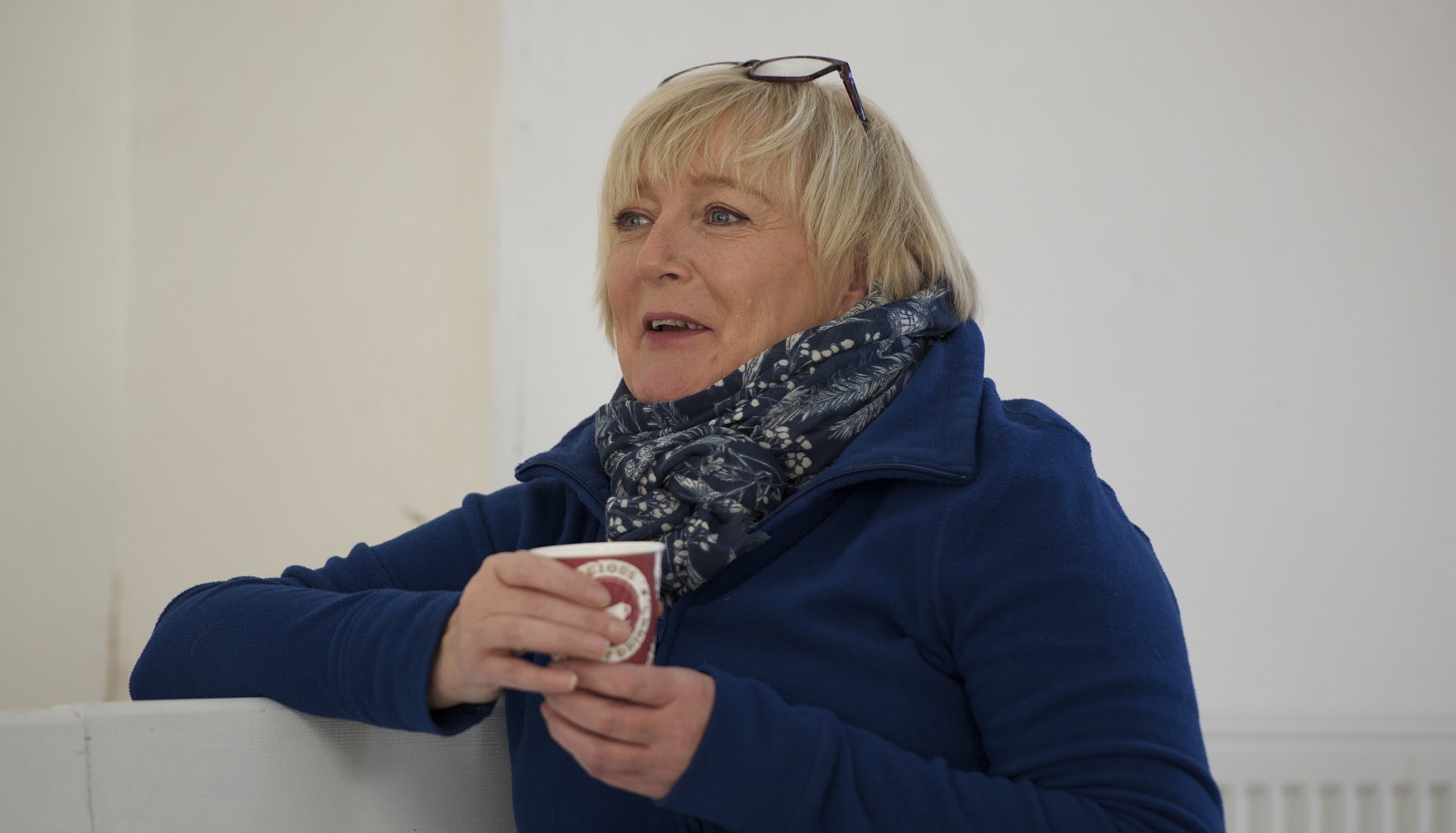After my perusal of the Yorkshire Sculpture International works in the City Centre spaces, I took a walk to the main hub of the event so far as Leeds is concerned.
The venue is the combined Henry Moore Institute and Leeds Art Gallery which, although two separate entities, are linked by a footbridge on the first floor which prevents you from having to brave the constant heat and sunshine for which Leeds is famous.
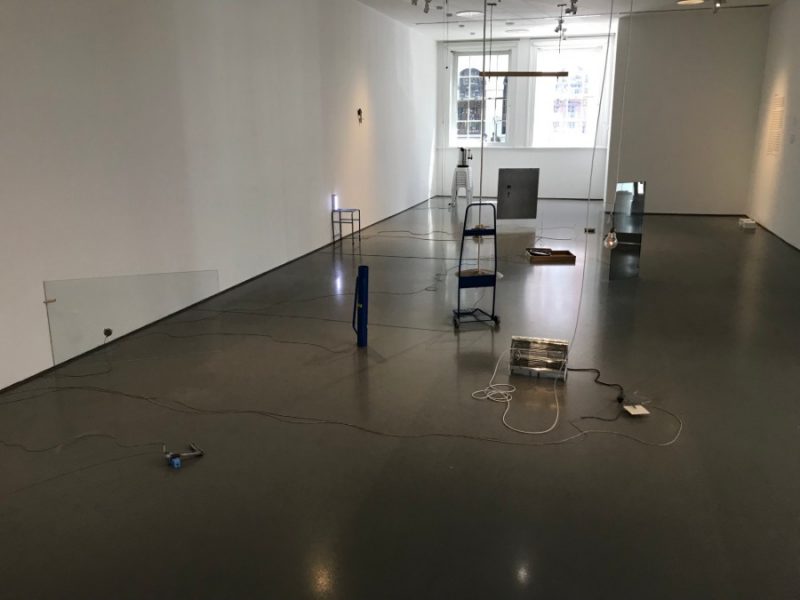
The first room I came across was solely devoted to a work by Tamar Harpaz, containing a collection of household objects and entitled 4 minutes 45 seconds. The items are wired up to an electrical source and programmed to burst into action of various descriptions, the whole process taking, you guessed it, 4 minutes 45 seconds. At one end of the room is a tea urn atop a pile of plastic stools. At first I thought that it might be for the convenience of the gallery staff, but a glass cup on the floor nearby contained a metal ‘sugar cube’ which vibrated at intervals to sound like a telephone. Attention is attracted by the pieces in turn and this is anything but a formal sculpture in the accepted sense, being a great introduction for people who might approach the event with trepidation.
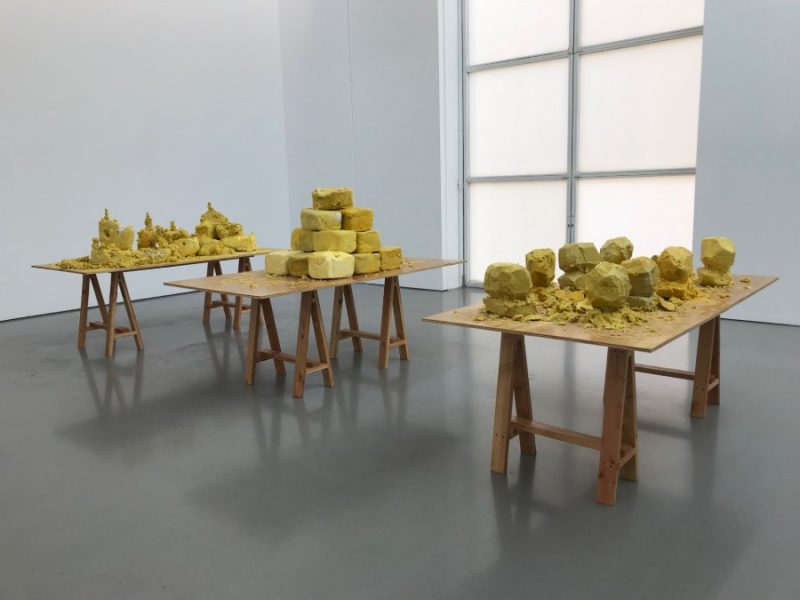
The second room continued in a similarly inclusive vein, being Shea Butter Three Ways, which was created especially for YSI19. It comprises three tables supporting ‘a series of portrait busts’. There are marks on the butter made by the sculptor’s tools, but they are unfinished. Whilst the first two are work in progress, the far table is there for attendees to ‘engage’ with, i.e. have fun making their own contribution to the piece. It is also awfully good for the complexion darling.
This article could quite easily turn into a catalogue of the exhibition, so I will just say that I’m sure you’ll be surprised as to how easy it is to enjoy the varied works of art on show. You don’t need a degree in fine art or even a basic knowledge of sculpture; just an open mind and a little time to read the comprehensive notes, about the artists and their works, which are displayed on the walls of the appropriate rooms.
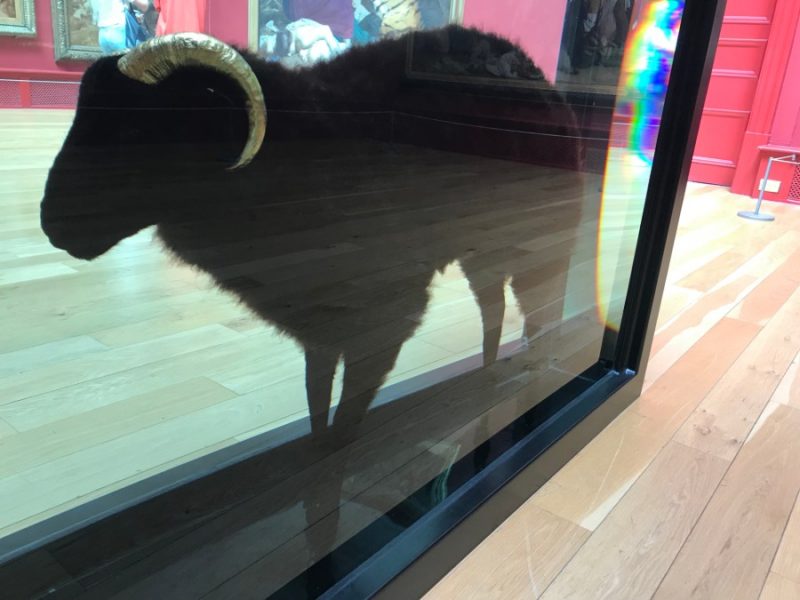
I will, however, mention the stuff pertaining to Leeds. There was the third Damien Hirst work as promised, which was The Black Sheep With Golden Horns and was a nightmare to photograph as the glass case in which it was displayed was highly reflective. It was also an optical illusion, as it looked to be very narrow when viewed from the side but when you looked at it end on was quite wide. Obvious, really, as it had a sheep inside.
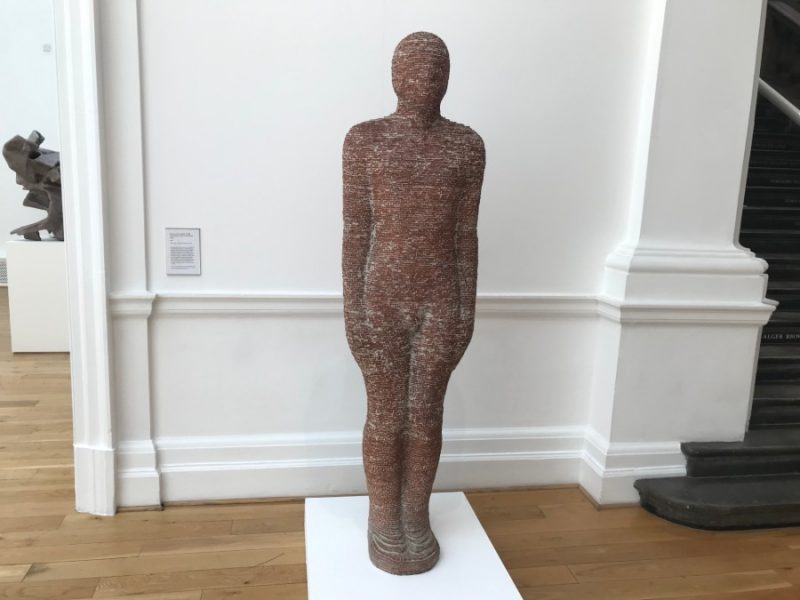
Although Anthony Gormley was born in London, he was asked to design a sculpture to be erected in Holbeck near the train station which would be our version of The Angel of the North. It was going to be a 120 foot tall man made entirely of the red brick for which Leeds really is famous. It would have been the largest sculpture in the UK at that time (1986) but it was never commissioned. It is a shame really as it would have been accessible by members of the public to use as a viewing platform to see the City through windows fitted to the statue’s ears! Whilst we have never had the real thing, there is the Maquette for the Leeds Brick Man on show. I would have loved to have seen it finished as it seems to sum up Leeds so well. There is another Gormley work on show, the gravity-defying Earth Above Ground, which is well worth a look.
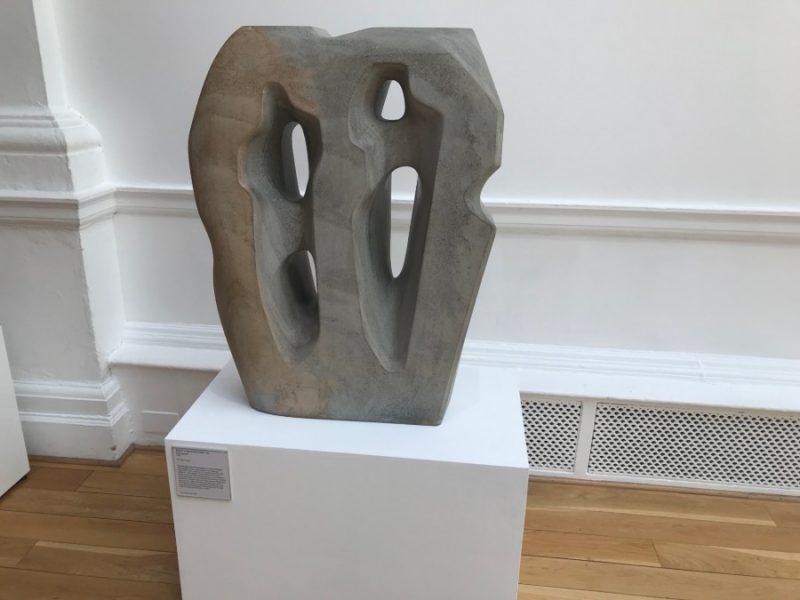
There is also a work by Barbara Hepworth called Hieroglyph, which is named after the writing system of Ancient Egypt and carved from Ancaster stone, a type of limestone. All right, I know that Ms Hepworth is from Wakefield, but it is near enough for me.
I have barely scratched the surface of the exhibition and would urge you to pay a visit. It is a very ambitious project and must have been a mammoth task to curate. As already mentioned, the vast majority of the works are very accessible to everyone and, as this is the Yorkshire Sculpture International, everything is free to enter. Who says tha’ gets nowt for nowt?
All photographs by Stan Graham.



